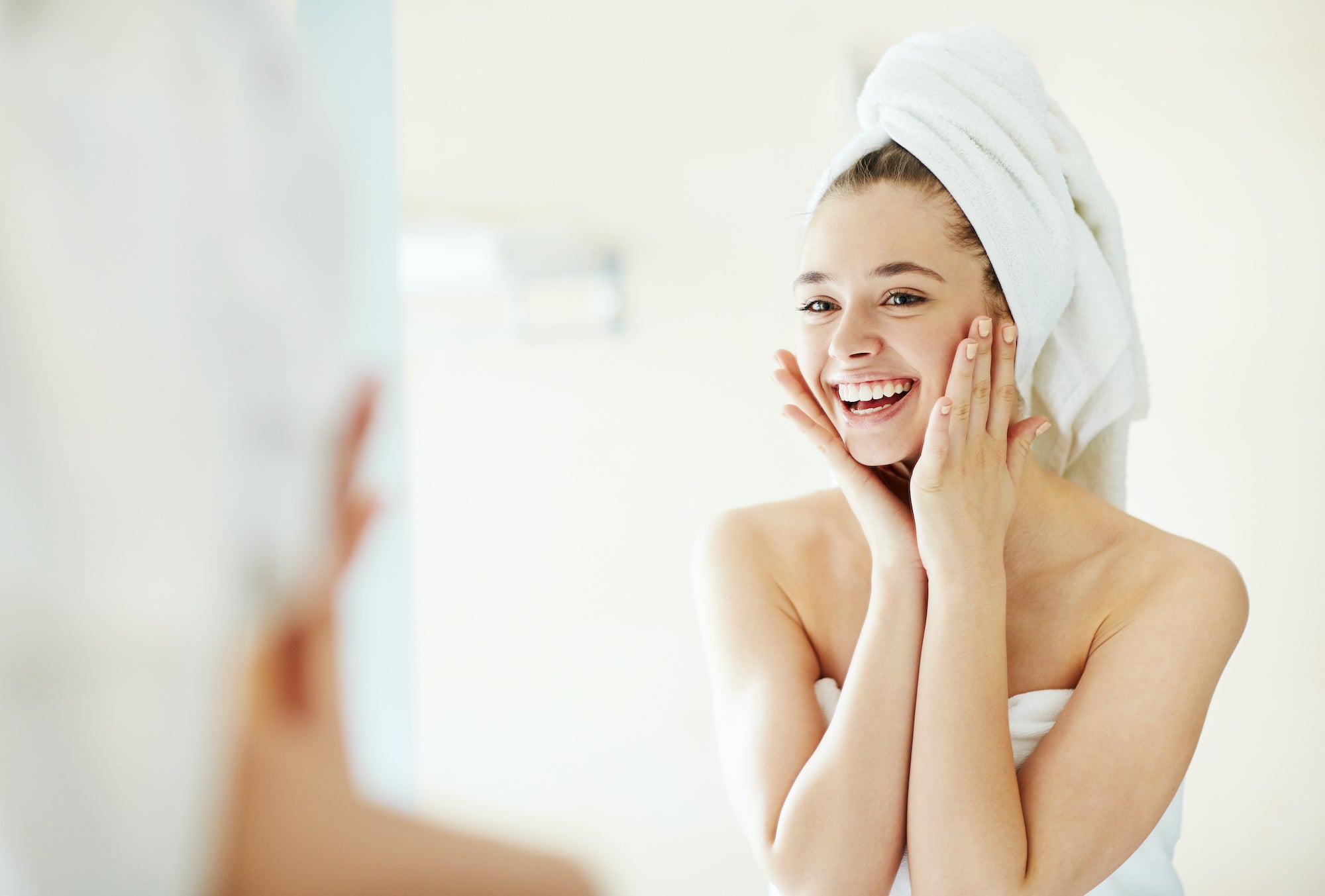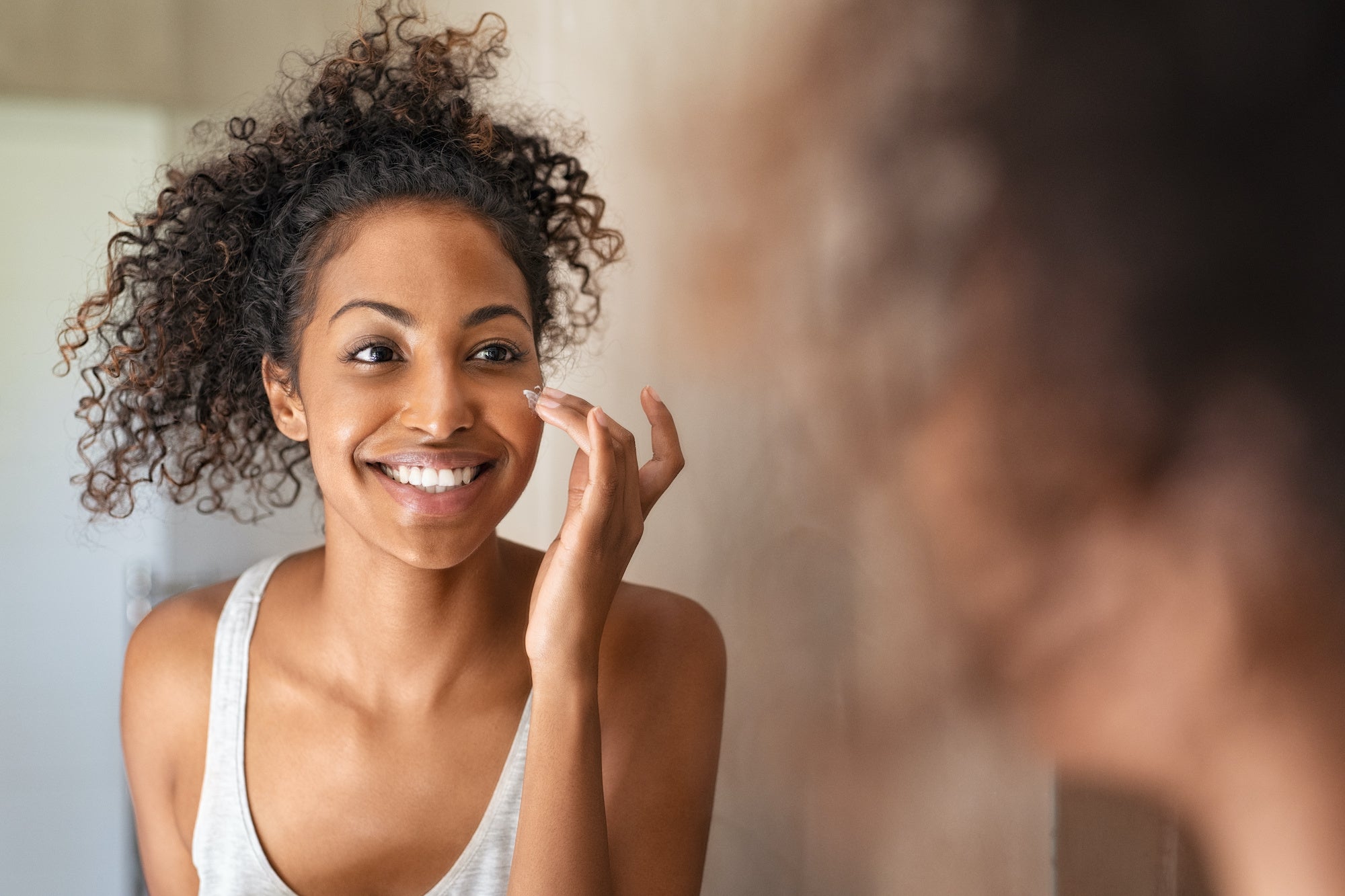
The Best Cleanser for Acne-Prone Skin
Raise your hand if you’ve gone your whole life thinking that you need to clean your face with the ferocity of a Brillo pad scrubbing an oven door. Yeah, me too.
Oh, and that burning and redness that comes from the excessive scrubbing, means it’s working. Beauty is worth the pain, right?
Au contraire, my friend. Back away from the scrub brush and the aggressive facewash. What you need is a delicate balance between tough and gentle to cleanse your skin without causing unneeded damage.

What you need is the Radiant Cleansing Nectar.
I know it might seem biased, but if you haven’t used this cleanser, you have no idea what you’re missing.
Natural Trumps Chemical Every Time
A quick Google search for ‘popular facewash’ will give you pages of results with cleansers using harsh active ingredients. Benzoyl peroxide and salicylic acid are a given when it comes to clearing acne.
For a product to be considered an ‘acne treatment’ by the FDA, it MUST include one of the two. Now, that doesn’t mean those are the only ingredients that treat acne, but they are so regulated and prevalent that those of us searching for acne products might not trust a face wash without benzoyl peroxide or salicylic acid.
Sure, both benzoyl peroxide and salicylic acid can treat breakouts. But in the long run, they make the problem worse. They work by drying out your skin to destroy all traces of sebum that feeds bacteria. It’s so drying, that your face overcompensates and creates even more sebum. Sounds a bit counterproductive, doesn’t it?
As an added drawback, the harsh ingredients make your skin hurt, sting, and burn. How can that be a sign of success?

On the other hand, our Radiant Cleansing Nectar relies on clean, natural ingredients to cleanse your skin. Instead of triggering more sebum production, this cleanser uses jojoba oil to help balance production.
Our natural ingredients don’t have side effects like their harsh chemical counterparts. Instead of dry and tight, they leave your skin feeling calm, clean and refreshed every time you wash it.
The Suds Are Making It Worse
There is something to be said about a satisfying texture. I was one of those people who loved the way my cleanser foamed on my face. I mean, is it wrong to imagine I’m the lead in a facewash commercial during my twice-daily cleanse?
But the truth is, in most cases the ingredients that create the sudsy goodness are harsh and damaging to your sensitive skin.

Harsh detergents called sulfates are used to create suds and bubbles. Those very same sulfates are used in dish soap! They strip moisture from your skin, which, hello, skin needs. They also irritate your skin barrier, leaving your already broken-out complexion even more compromised. Talk about more harm than good.
Sulfates are a sensory ingredient added to get the sudsy effect. Sensory ingredients are used to make a product have the desired texture and appearance. Usually, they don’t do anything to help the effectiveness of a product.
Averr Aglow doesn't rely on sensory ingredients to make products feel right. While it would be ideal to have a product feel the way you expect, so many sensory ingredients are icky and do more harm than they’re worth.
The main focus of our Radiant Cleansing Nectar is to safely clean and nourish the skin. The silky texture is just an added benefit.
You apply the cleanser with a cotton pad that you rub into your skin to exfoliate while you clean. No suds, no irritation, and no rinsing.
No Rinse? No Problem!
The active ingredients in your skincare need time on your skin to make a difference. Facial cleansers that you immediately rinse off might remove superficial daily grime, but they're not doing you favors in the long run.
Plus, the tap water you use to rinse off your cleanser might be irritating your skin. Tap water can have an excess of minerals, like calcium and magnesium.

But minerals are useful, right? Not these, not for your skin anyway. Calcium and magnesium salts affect the skin barrier and make it hard for it to repair itself. No wonder those blemishes aren’t healing.
Tap water also has elevated pH levels. When you use it to rinse your face, it raises your skin’s pH levels for several hours afterward. What’s the big deal with increased pH? A low pH level in your skin ensures that your skin barrier is balanced and able to protect against outside irritants and pollutants, like bacteria. A healthy pH also keeps your skin moisturized.
Our Radiant Cleansing Nectar is rinse-less, as in no hard tap water is needed. You use it by buffing it onto your face with a cotton round. The cotton round gently pulls off dead skin and dirt, and the nectar stays behind to nourish and moisturize your skin.
Our ingredients are so safe and gentle that they can comfortably stay on the skin. Your average drugstore cleanser has to be rinsed off because the ingredients aren’t safe for long wear.
The Radiant Cleansing Nectar doesn't leave your face feeling tight or dry. It's full of essential oils and extracts.
How to Work the Radiant Cleansing Nectar Into Your Routine
We made it super easy for you to remember when to use the Radiant Cleansing Nectar, it says it right on the bottle: 2!
After liberally spraying your face with the #1 Clarifying Hydration Dew, shake the nectar until it’s fully combined. If you can still see two separate colors in your bottle, keep on shaking. Press a clean cotton pad into the top of the bottle and turn the bottle upside down.
Let the nectar soak through to the other side of the cotton pad. Repeat three times, so you have three little circles of cleansing nectar goodness.

Using the more oily side of the cotton pad, buff the nectar onto your face with a good amount of pressure. Remember, you’re exfoliating here. Continue to rub it onto your face using the other side of the cotton pad.
See that grey/beige film left behind on the cotton? Those are your dead skin cells. Aren’t you glad you got rid of them?
Want to do a fun experiment? Wash your face with your normal cleanser and follow it with the Radiant Cleansing Nectar. Take stock of how much of that film is on the cotton pad. That is your physical evidence of how your regular cleanser is falling short.
Follow the cleansing nectar with the #3 Clear Skin Elixir in the evening, or the #4 Flawless Nourishment Cream in the morning.
Different is Better Because It Works
Humans are creatures of habit. The idea of not using water to wash your face might be unsettling. But there’s a reason the cleansers you’ve used in the past haven’t worked. If you want results, you have to change things up.
We know you’re going to have some questions as you start this new routine and we're always here to answer them! We’re willing to bet that before long, you’ll forget you ever washed your face any other way.

Take a look at the answers to these frequently asked questions.
What do I use in the shower?
Just water! There’s no need to add another cleanser in the shower, all your face washing happens outside the shower, Remember it’s rinse-less! You don’t have to do any extra scrubbing in there either. One less step in the shower means you have time for that hair mask you’ve been wanting to try. Score!
Will the Radiant Cleansing Nectar remove my makeup?
It sure will! But this stuff is liquid gold, and we wouldn’t want you to waste product scrubbing off your makeup. We’d recommend removing your makeup first, and then the cleansing nectar can get any leftover makeup. Looking for a remover recommendation? We love the Completely Clear Gelee Makeup Remover!
What’s with the wispies in my bottle??
It’s the jojoba oil! Jojoba oil is used to balance the natural oil in your skin. While it’s called an oil, it’s technically a wax ester. With temperature changes, it can become cloudy or create little wisps in the nectar. It doesn’t affect the effectiveness of the product; it’s just the nature of using natural ingredients.
Your skin has been waiting for a cleanser this gentle and efficient. Isn’t it about time that you give your skin what it wants? Get your hands on the Averr Aglow Radiant Cleansing Nectar and see what you’ve been missing!



